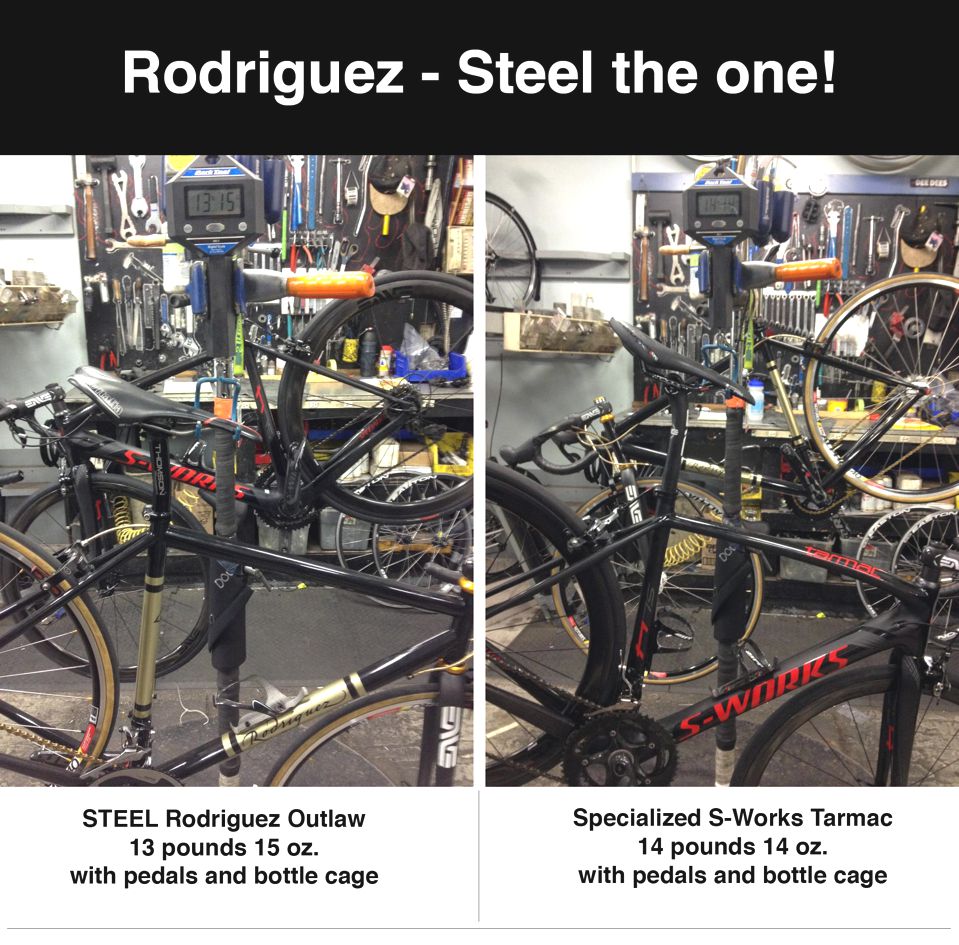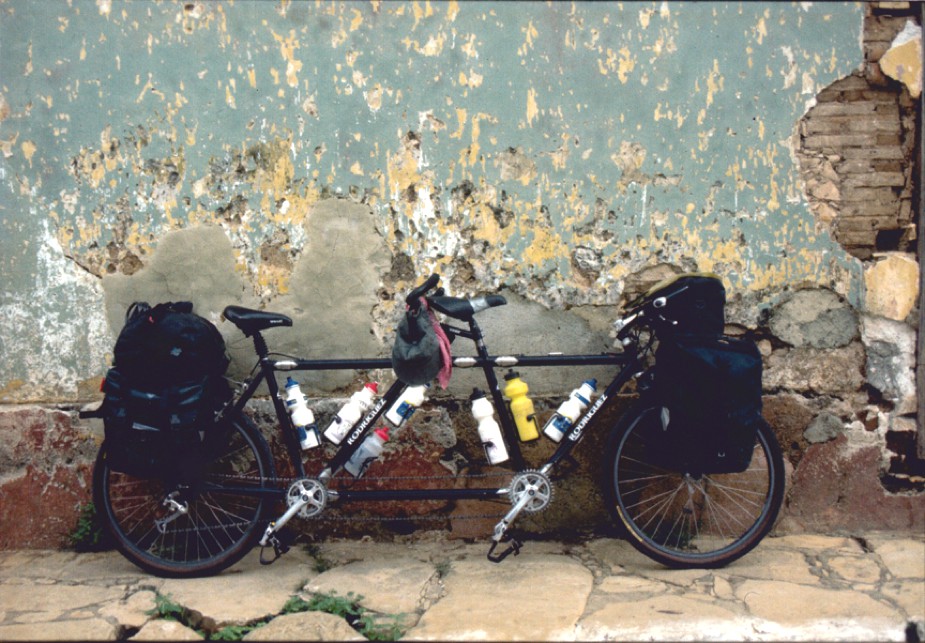This article was written Feb. 6th, 2015. Prices quoted reflect that date, and may have changed if you are reading this at a later date.
Visit us online at rodbikes.com
Bodyfloat Seat Post Installed and Adjusted • Just $250 at R+E Cycles • (206) 527-4822
What do the roads you ride feel like?

Do you find yourself having to stand up frequently over cracked, crumbling asphalt on your rides? How about you commuters? Is your expletive quota reached on just about every commute? I’m sure that you’re hoping for the city to fix the road, but that’s just wishful thinking now, isn’t it?
Now you can ride in comfort and quiet while sitting on your bicycle seat. “Surely you jest!” you’re thinking to yourself right now, but I’m not. Let me fill you in on the secret we’ve discovered.
Suspension seat posts have a long history, but most people think of them like we did….only worth using on the back of a tandem. That was before the Bodyfloat seat post.
If you would like to make a comfort upgrade to your bicycle that really works, and is high performance, this article is for you. Let me take you on a short journey into the world of suspension seat posts and show you where it is now.
First, a little history:
Early Attempts at Comfort:

As the Nation’s oldest tandem manufacturer, we’ve got a long history with every suspension style seat post imaginable. All the way back to the early Hydrapost, suspension seat posts have been added to almost every tandem we’ve built. Stokers (the person on the back of a tandem) are not aware of upcoming bumps unless the captain (the person up front) warns them in advance. Needless to say, there are lots of times when that does not happen, and the stoker feels the full force of the bump. So, tandem manufacturers like us have always tried to use a seat post that would mitigate this problem a bit.
The first designs were to try to make the seat post into a shock absorber. While a few of these seat posts were somewhat effective, they were not really the kind of product that anyone wanted to use on a high performance single bike. They were heavy, and only provided some ’emergency’ relief for that ‘whoops I forgot to warn you on that one’ situations. They basically worked like a pogo stick built into the seat post. One problem with this design is that your seat tube is at an angle (usually 73° from the ground or so), but gravity is trying to pull your body down at a 90° angle. This creates a lot of what’s been called ‘stiction’. Basically, the shock absorber is stuck in place until you hit something violent enough to break it free. When it breaks free, it drops, but then returns with great force (like a pogo stick). Kind of a delayed reaction with a slightly dampened energy return. In the absence of any other designs, these were used for several years.
You still see these seat posts all over on ‘comfort bikes’. They are very inexpensive these days, but don’t really work very well.
Comfort in the 1980’s and 1990’s

The first product to really work well was the Alsop Softride beam. This was in standard use on many brands of tandems for the stoker position for almost 20 years. We also built a lot of single bikes for the beam through the 1990’s. It required a special frame design, with special braze-ons and lots of specific parts. So, it didn’t really take off too well as you couldn’t easily add one on to your existing bike. When used though, this product did exactly what it was supposed to. The beam dropped a little bit with the riders weight (straight up and down and not at the 73° angle). When the rear wheel dropped into a rut, the rider stayed at the same height. Like the suspension in a car, the wheels could go up and down, but the rider didn’t feel the impact. No sticktion, great suspension, but your bike had to be custom made to work with the design. My wife and I ride a tandem with a Softride beam to this day. She swears by it, but the company is now gone.

After the Softride company went out of business, we were stuck with various seat post designs to try and provide some relief to stokers. The shock absorber version was not so good, so we tried some of the parallelogram designs that were out. These tried to take the stiction away by attaching the seat to a parallelogram and allowing the rider weight to raise and drop straight up and down like the Softride beam did. The problem that we ran into with them was that the ‘falling rate’ of the spring design was wrong. You could say they were built backwards. The spring was strong when the seat was at the top, and got weaker as the seat moved downward. So, if a bump was hard and the seat post began to drop, the rider would end up all the way at the bottom of the action. Then they would have to lift their weight back off of the seat to get the seat back up because the spring was too weak to actually lift the rider.
Even with their imperfections, we were limited to use these for the stoker positions of many tandems. Some people used them on single bikes, but like I said, these designs were not very high performance. For those who wanted something incredible, the wait was almost over. In 2013, the answer would arrive in the form of the Bodyfloat.
“OK Dan! Bring it in to this century already!”
In 2013, one of the guys who worked on the design for the original Alsop Softride beam visited our shop. He brought with him a new seat post design that he was very excited about, the Bodyfloat. He did a demonstration install/setup for Scott (our shop manager) on his personal bike. It was near closing time, so Scott rode the bike home with the post in it, and then he rode it back in the next morning. He said to me “I’m buying that seat post, and leaving it on my bike!” That’s a testament to the performance of this new post. Scott has ridden every suspension post available, and never thought he wanted one on his personal commuter. This post changed his mind.

The 2015 Bodyfloat Seat Post Just $250 at R+E Cycles We were so excited about the new design that we invited the Bodyfloat representative to display his post in our Bike and Pike event last year to show our customers his new product. It was an immediate smash hit, and several of our customers ordered them for not only their tandems, but their single bikes as well. Then, just as quickly as it took off, they couldn’t produce them fast enough for our demand. We spent several months without them. I was kind of bummed out because I wanted to try one on my own bike. Well, good news. They figured out their production issues, and now they are readily available, and 40% less than they were a year ago! The original version was Titanium at $425, but the new version is aluminum at just $250. The Ti version is still available for the rider that needs a super long seat post.
The Bodyfloat works on a different principal than all other suspension seat posts before it. Instead of having a falling rate design, it has a ‘rising rate’ design. The Bodyfloat springs are lighter at the top, and gradually get stiffer as the seat drops. No more having to lift your self off the seat to raise the seat back to start position. It also drops just slightly as your weight sits onto the post like the old Softride beam design did. The wheels can drop in and out of bumps while you, the rider, stays stationary in space.
I have since installed one on my bike and had the same experience as Scott. I will keep it on my bike, and I’m considering installing one on the Captain position of my tandem as well. It’s amazing how I can only hear the bike hitting the small bumps and cracks in the road, but I do not feel them anymore. I have to say, I’m impressed!
I can talk until the cows come home, but maybe you should just come to the shop and try one for yourself. Give us a call at (206)-527-4822 and set up a time to come by with your bike and your riding gear. We’d be happy to set one up for a test ride.
Not exactly ‘Plug and Play’
The Bodyfloat does need to be adjusted to your weight and riding style by a professional. Not to worry though, we’ve been trained in the proper set-up and will do it for you for FREE with purchase of a Bodyfloat! Free is a very good price.
“But…but…wait! I ordered one online and it’s not set up for me.”
If you’ve already ordered one online, or from someone eles who didn’t set it up for you, no need to worry. We can set it up for you for just $25. Just call us for an appointment.




















